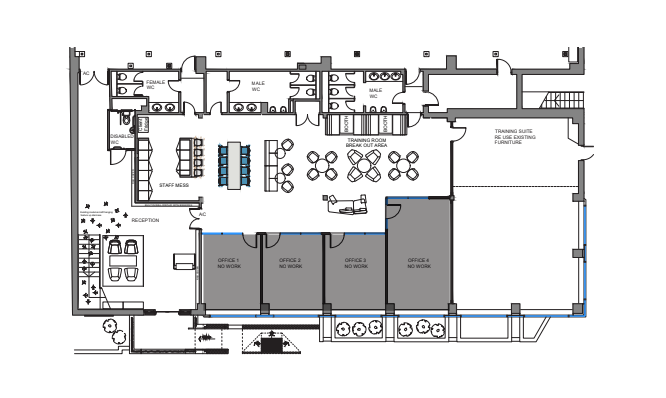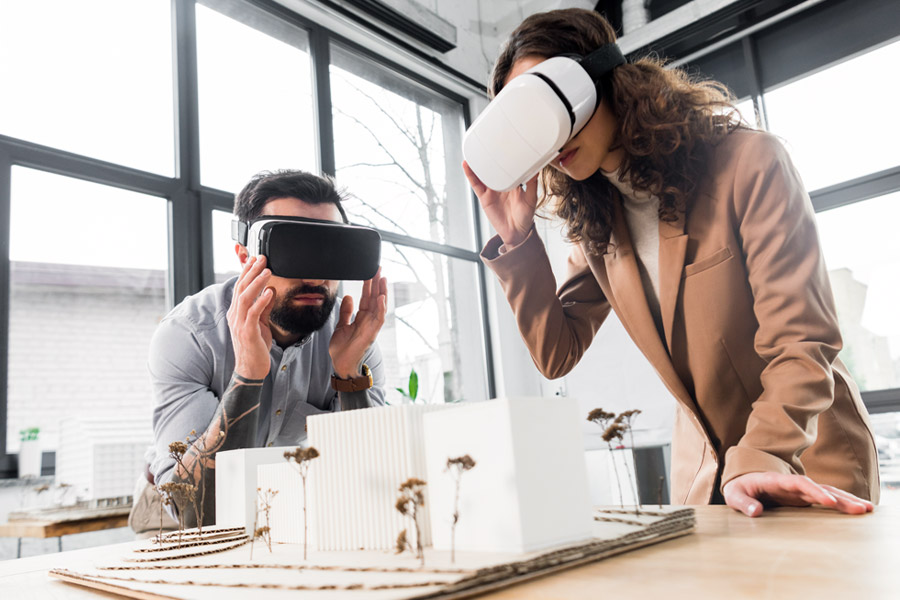Over the years we’ve seen how adaptive and collaborative workspaces, lighting and biophilic designs...
How AI Can Apply to Architecture, Design and Build in 2023
In 2023, AI is increasingly being applied to several industries to maximise their accuracy and productivity. For architecture, design, and building processes, AI is ultimately revolutionizing the industry in several ways. Here are some of the key areas where AI is making an impact:
Generative Design
AI algorithms can be used to generate multiple design options based on predefined parameters and constraints. By analysing vast amounts of data, including architectural styles, materials, building codes, and environmental factors, AI can suggest innovative and optimised design solutions. This technology helps architects explore a wide range of possibilities, saving time and fostering creativity.

Energy Efficiency and Sustainability
As companies strive to be more sustainable in the build industry, AI can be used to assist in designing environmentally friendly buildings. By analysing climate data, energy consumption patterns, and building materials, AI algorithms can optimise energy efficiency and propose sustainable design strategies. For example, AI can determine the best placement of windows, insulation levels, and renewable energy sources to minimise energy consumption.
Building Information Modeling (BIM)
AI can enhance the capabilities of BIM software. By analysing and interpreting 2D and 3D design data, AI algorithms can automatically detect errors, inconsistencies, and clashes in designs, reducing the likelihood of construction issues. AI can also assist in automating tasks such as generating construction schedules, estimating costs, and managing project documentation.
-1.png?width=459&height=385&name=Untitled%20design%20(9)-1.png)
Smart Building Management
AI can play a crucial role in the operation and management of smart buildings, making the process both quicker and more effective. AI algorithms can analyse data from various sensors and systems, such as occupancy, energy consumption, and security, to optimise building performance. AI-powered systems can automatically adjust lighting, heating, and ventilation based on real-time conditions, leading to improved occupant comfort and energy savings.
Virtual Reality (VR) and Augmented Reality (AR)
AI combined with VR and AR technologies offers immersive design and visualisation experiences. Architects and clients can explore virtual models of buildings, enabling better communication and understanding of design concepts. Taking the design proposal stage to a whole new level. AI algorithms can also analyse user feedback and preferences to refine designs in real-time.

It's important to note that while AI brings numerous benefits to architecture, design, and building, human expertise and creativity remain vital in the process. At Saracen, we believe that AI should be seen as a tool to enhance and support human capabilities rather than replace them. There's always something more when building designs have that personal touch.
Head Office: Saracen Group Ltd, Unit H, Manawey Business Park,
Telephone: +44 (0)870 743 0920
Fax: +44 (0)870 743 0922
Email: enquiries@saracengroupltd.com
Website: www.saraceninteriors.com
A company registered in England. Registration No:12003145



